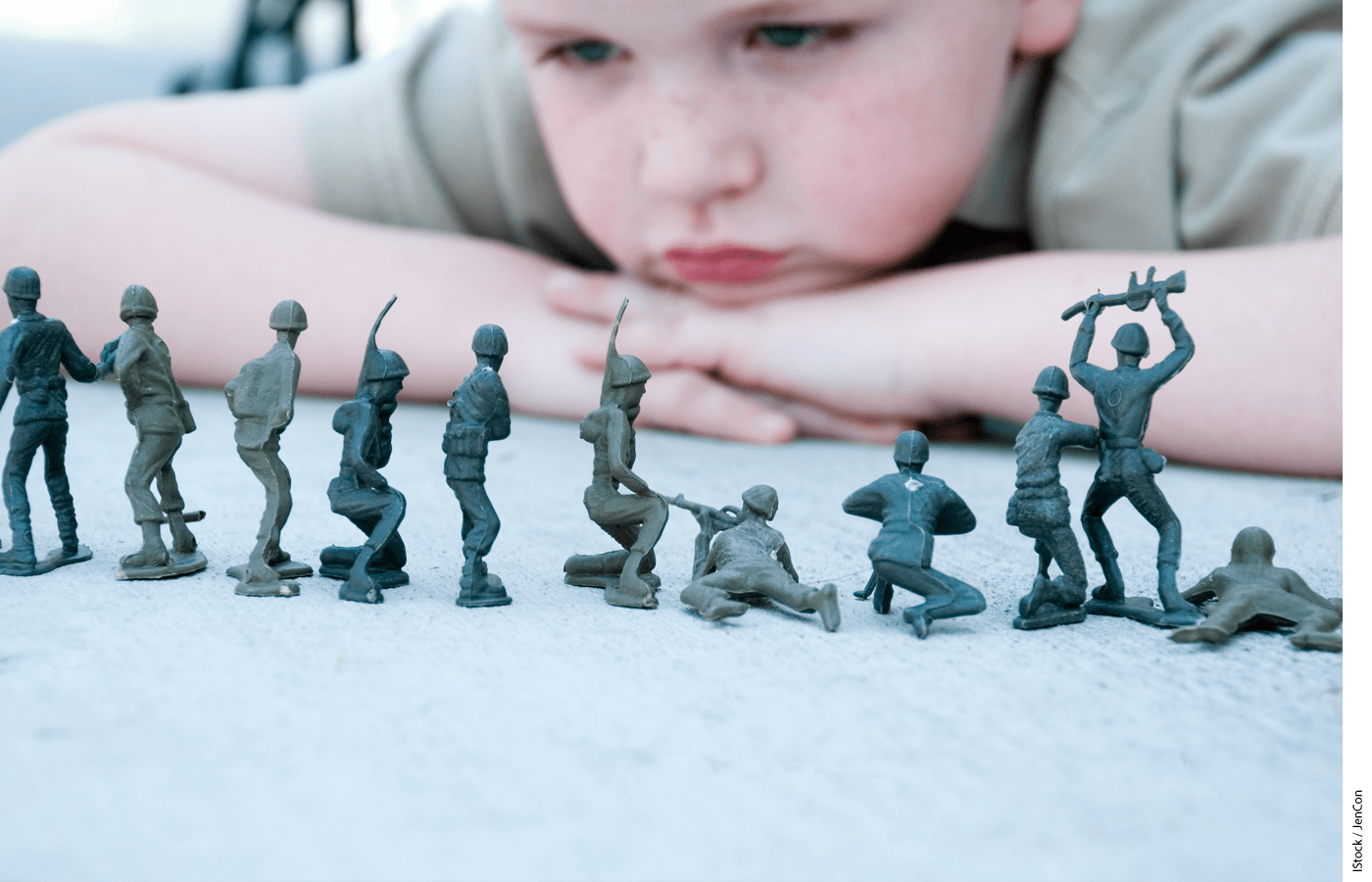
An Amazon box was on the porch the other day. (I get sent a lot of books. It’s a cool perk.) I pulled out five colorful, oversized paperbacks. Great Battles for Boys: The Korean War. Great Battles for Boys: The American Revolution. Great Battles for Boys: WW2 in Europe. And two more. I found the titles delightfully countercultural.
I mean, who writes about military strategy today? Who unabashedly markets stuff to boys? The books, all published between 2014 and 2022, are authored by history teacher Joe Giorello. They all run about 150 to 250 pages with straightforward text, anecdotes, pictures, maps, and suggestions for further reading.
Having never heard of the series, I was curious how these books were faring in the larger world. The answer? Very well. On Amazon, at the time of this writing, Giorello’s volume on WWII in Europe ranked #2 in “Children’s American History of 1900s.” His volume on the Civil War was #1 in “Children’s American Civil War Era History Books.” His book on the Revolutionary War was #1 in “Children’s American Revolution History.” There are thousands of enthusiastic, five-star reviews.
And yet, like I said, I’d never heard of Giorello. I couldn’t find a single mention of him when I searched School Library Journal, Education Week, the National Council for the Social Studies, or the National Council for History Education. As best I can tell, he’s self-published. The stories are interesting, but the narrative is pretty rote, with no gimmickry or multimedia pizzazz. It’s just workmanlike, accessible history. For instance, the chapter on “The Battle of Britain” in WW2 in Europe begins:
By June 1940, Germany had achieved a victory in Norway, but the win came at a steep cost. The battle had damaged or sunk over half of Germany’s warships.
This loss was crucial. Hitler desperately wanted to conquer Great Britain, but with half his fleet out of commission, the German navy was no match for the powerful British Royal Navy.
Hitler decided he would conquer Britain by air.
So, what’s going on? Why have these books been such a silent success? The most salient explanation may be the frank, unapologetic decision to offer books about “great battles for boys” in an era when that’s largely absent from classrooms. This may simply be the kind of history that a lot of boys are eager to read about. Of course, even penning that sentence can feel remarkably risqué nowadays, which may be a big part of the problem.
It got me thinking. My elementary-age kids have brought home or been assigned a number of children’s books on history. Most are focused intently on social and cultural history. I’ll be honest. Even as someone who’s always been an avid reader, I find a lot of that stuff pretty tedious. As a kid, I found books about the Battle of Midway or D-Day vastly more interesting than grim tales of teen angst, and I don’t think that makes me unusual. Moreover, it surprises no one (except the occasional ideologue) to learn that girls generally appear more interested in fiction than boys—or that boys tend to prefer reading about sports, war, comedy, and science fiction, while girls favor narratives about friendship, animals, and romance.
Today, when I peruse classroom libraries, recommended book lists, or stuff like the summer reading suggestions from the American Library Association, I don’t see much that seems calculated to appeal to boys.
One reason that boys read less than girls may be that we’re not introducing them to the kinds of books they may like. There was a time when schools really did devote too much time to generals and famous battles, but we’ve massively overcorrected. Indeed, I find that too many “diverse, inclusive” reading lists feature authors who may vary by race and gender but overwhelmingly tend to write introspective, therapeutic tales that read like an adaptation of an especially heavy-handed afterschool special.
Subscribe to Old School with Rick Hess
Get the latest from Rick, delivered straight to your inbox.
Now, my point is not that kids should read this rather than that. Schools should be exposing all students to more fiction and nonfiction, with varied topics and themes. If that requires assigning more reading, well, good.
Then there are the well-meaning educators and advocates who approach book selection as an extension of social and emotional learning. Heck, while writing this column, I got an email promoting the nonprofit I Would Rather Be Reading, which uses “trauma responsive literacy support and social-emotional learning to help children.” I’m sure it’s a lovely organization, but I’d be shocked if any of the books in question feature stoic virtues or manly courage. After all, the therapy/SEL set has worked assiduously to define traditional masculinity as “toxic.” And all this can alienate kids who find the therapy-talk unduly precious or rife with adult pathologies.
I hear from plenty of educators who say they’re reluctant to talk about the needs of boys for fear of being labeled reactionary. But more boys might develop a taste for reading if they encountered more of the kinds of books they’d like to read. I’d take more seriously those who talk about inclusive reading lists if their passion extended to the well-being of those students bored by social justice-themed tracts and if they truly seemed more invested in turning every kid into an avid reader, which requires a diverse mix of books available—including those about “great battles for boys.”
Frederick Hess is an executive editor of Education Next and the author of the blog “Old School with Rick Hess.”



